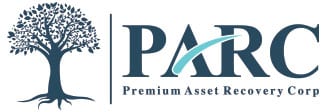Understanding Medical Factoring: A Guide for Healthcare Providers in 2024

The Role of Government and Policy in Addressing Medical Debt
October 24, 2023Understanding the financial levers in healthcare is crucial for medical practices, and medical factoring is a key player in this arena. This essential tool supports practices by providing immediate funds, ensuring smooth operations and consistent patient care. Medical factoring can offer a much-needed financial boost if your practice is constricted due to delayed payments.
In this guide, we’ll explore the concept of medical factoring for healthcare providers and administrators, highlighting its benefits, including improved cash flow and reduced administrative tasks. So, let’s dive in, starting with the definition of medical factoring.
Defining Medical Factoring
What is Medical Factoring?
At its core, Medical Factoring is a financial strategy that comes in handy for healthcare providers facing cash flow issues. Think of it as a way for your practice to sell its unpaid invoices to a third party, often referred to as a “factor” or “medical debt buyer”. This isn’t a loan; instead, it’s a straightforward transaction where you receive instant cash for the invoices you’ve sold.
Medical factoring primarily focuses on self-pay medical debt or invoices sent out to patients who don’t have insurance or have amounts unpaid by their insurance. It’s also applicable to invoices pending payment from insurance companies. With medical factoring, you don’t have to wait for these payments any longer—you get the funds you need right away, allowing you to keep your practice running smoothly.
How does Medical Factoring Work?
The process is pretty straightforward. After providing a medical service, you’d usually wait for payments from either the insurance company or the patients themselves. But with medical factoring, you sell those invoices at a discount to a factor instead of waiting. The factor gives you cash up front, and then they take on the responsibility of collecting the owed amount.
The primary advantage here? You get immediate access to capital, which is especially helpful if you’re dealing with slow-paying patients or insurance companies. This way, you don’t have to stress about financial delays while waiting for payments to come through and can focus on what truly matters—providing care to your patients.
Next, let’s explore how medical factoring differs from traditional lending options and why it might be the better choice for your practice.
Differences Between Medical Factoring and Traditional Lending
Quick Access to Cash
First and foremost, let’s talk about speed. When it comes to traditional lending, obtaining funds can be a lengthy process. There are applications, approvals, and often a waiting game. In contrast, medical factoring offers you a swift solution. You sell your invoices, and voilà, you receive the funds promptly. Without an application or approval process, you get cash in hand when you need it.
Credit Concerns
Now, consider credit requirements. Traditional loans usually involve rigorous credit checks. If your practice is new or you’ve had credit issues, securing a loan can be difficult. Medical factoring is less concerned with your credit status; instead, it focuses on the creditworthiness of your patients or the insurance companies owing you money. So, medical factoring remains a viable option even if you’ve hit a few financial snags.
Debt Considerations
Debt is another area where these two differ significantly. When you take out a loan, it’s recorded as a debt. It sits on your balance sheet, and you’re obliged to pay it back with interest. Medical factoring, on the other hand, isn’t a loan. You’re essentially forwarding your receivables, so it doesn’t add liabilities to your practice’s financial statements. You get the cash without the debt—pretty neat, right?
Repayment Schedule
Also, let’s think about repayments. Loans come with a set repayment schedule; missing a payment can result in penalties. With medical factoring, there’s no repayment per se. The factor takes on the risk of collecting the payment, and you’re not responsible for ensuring the invoices are paid once sold.
Administrative Relief
Finally, the administrative relief offered by medical factoring cannot be overstated. Managing loan repayments can be an additional administrative task that most healthcare providers can do without. With medical factoring, once the invoices are sold, your involvement with them ends, allowing you to minimize the administrative tasks associated with debt collection.
The Process of Medical Factoring
Step One: Selecting Invoices
The journey begins with you going through your accounts receivable and selecting the unpaid invoices you’d like to factor. Don’t worry; you have the control here. You can choose one, some, or all, depending on your immediate cash flow needs.
Step Two: Selling to the Factor
Once you’ve picked the invoices, you’ll sell them to the factor. This is where the magic happens. The factor will review the invoices and advance you a significant portion of their value. This rate can vary, but you’ll typically receive around 80% to 85% of the total amount.
Step Three: The Factor Collects
After the sale, the factor takes over. They’ll work to collect the full amount owed on the invoices from the patients or insurance companies. This means the responsibility of collection is off your shoulders, freeing you up to focus on your practice.
Step Four: Receiving the Residual Amount
Finally, once the factor successfully collects the payments, they’ll send you the remaining balance of the invoices, minus their service fee. So, in the end, you’ll receive the rest of your money, minus a small fee for the convenience and service.
In Conclusion: The Value of Understanding Medical Factoring
Grasping the ins and outs of medical factoring provides healthcare practices with a viable option for maintaining liquidity and ensuring smooth operations. With benefits like improved cash flow, reduced administrative tasks, and overall financial stability, it’s an alternative worth considering for any practice feeling financial pressure. In a world where financial health is integral to delivering quality patient care, incorporating strategies like medical factoring is not just smart—it’s essential for your practice’s longevity and success.
Ready to Explore Medical Factoring Further?
If medical factoring sounds like a solution that could benefit your practice, the next step is to consult with professionals who can offer personalized advice and guidance. Reach out to experienced medical debt buyers or factors who understand the unique challenges of healthcare financing and can help navigate you through the process seamlessly.
Remember, every practice’s situation is different, and a one-size-fits-all approach doesn’t work in healthcare financing. Engage with experts, ask the right questions, and determine if medical factoring is the financial solution your practice needs to thrive in today’s challenging healthcare landscape. Here’s to your practice’s financial health and success!
Tools and Resources for Further Reading
ACA International: A great resource for credit and collection professionals, offering valuable insights and support.
HFMA: The Healthcare Financial Management Association provides extensive guidelines for the effective management of healthcare revenue cycles.


